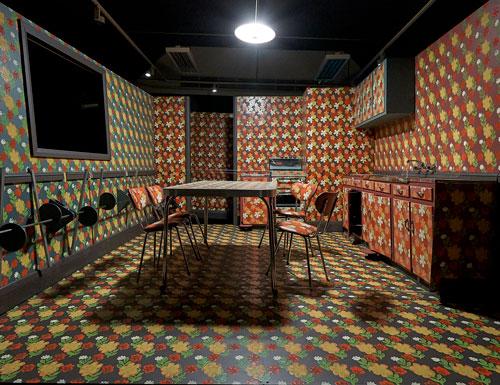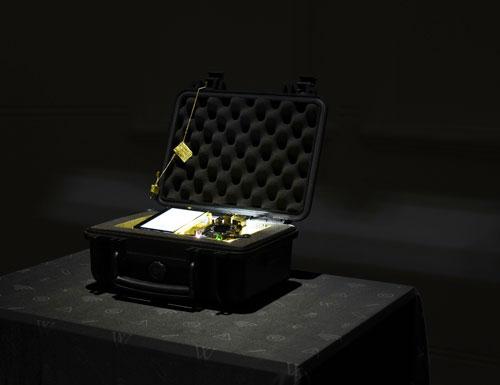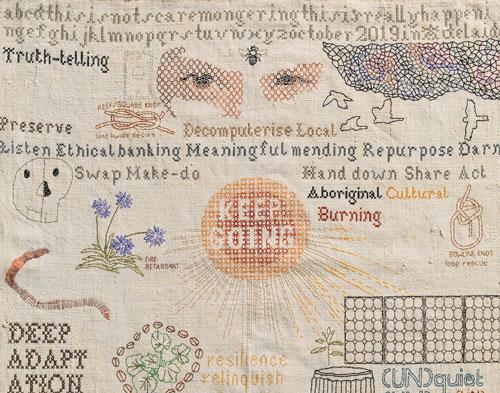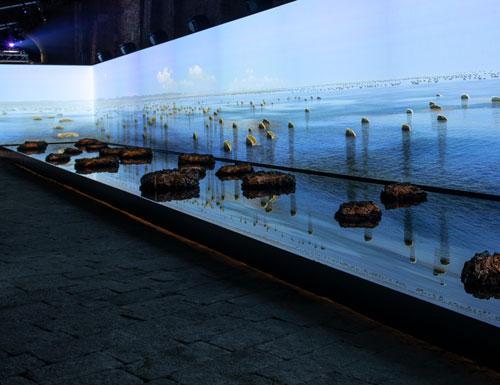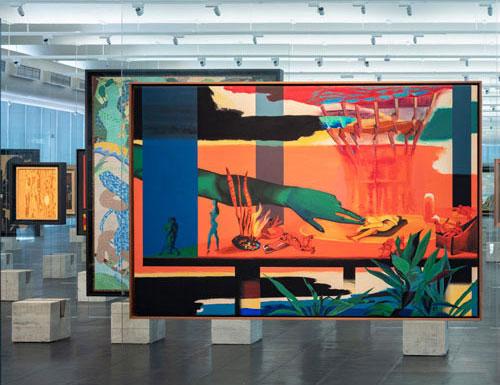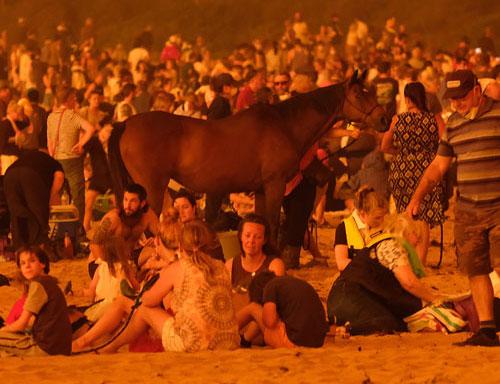Search
You searched for contributors, issues and articles tagged with Science ...
Contributors
Artlink
A.D.S. Donaldson
Abbra Kotlarczyk
Alan Roberts
Alan Saunders
Anne Kirker
Bec Tudor
Ben Eltham
Beverly Knight
Caroline Turner
Carolyn Meloy
Cath Bowdler
Christine Lewis
Darren Jorgensen
Darren Tofts
David Smerdon
David Walker
Diana Wood Conroy
Donald Brook
Dorothy Erickson
Dorothy Jones
Eve Sullivan
Felicity Wright
Geoffrey Edwards
Glenda King
Grace Hughes
Helmut Lueckenhausen
Ian Milliss
Ihab Hassan
James Bennett
James Darling
Jane Deeth
Janelle Boyd
Jenni Dudley
Jennifer A. McMahon
Jenny Armstrong
Jim Falk
John Mateer
John Neylon
Jude Adams
Karen Finch
Kay Lawrence
Kerry Giles Kurwingie
Kevin Murray
Lauren Sutter
Leon Marvell
Louise Dauth
Mandy Treagus
Margaret Kirkwood
Margaret Moore
Margot Osborne
Marion Marshall
Michael Newall
Noris Ioannou
Paola Anselmi
Pat Hoffie
Peter Hill
Peter Timms
Rex Butler
Robert Nelson
Saige Walton
Sarah Hetherington
Sera Waters
Siân Ede
Stephanie Britton
Stephanie Radok
Stephen Bowers
Sue Lorraine
Sue Rowley
Sylvia Kleinert
Ted Snell
Tim Ralph
Tim Walsh
Ulanda Blair
Wendy Walker
Wes Hill
Yvette Watt
Issues
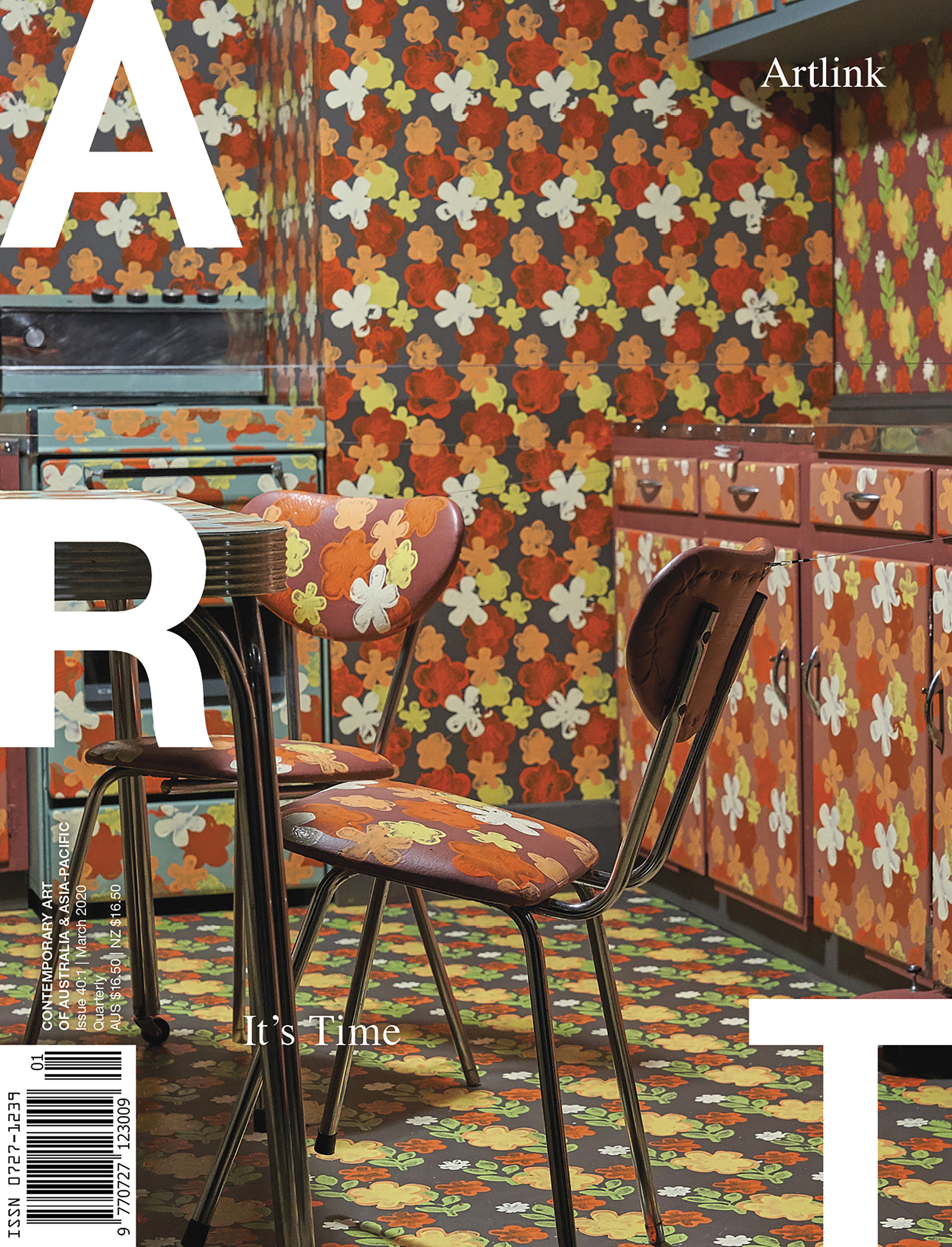
It's Time
Issue 40:1 | March 2020
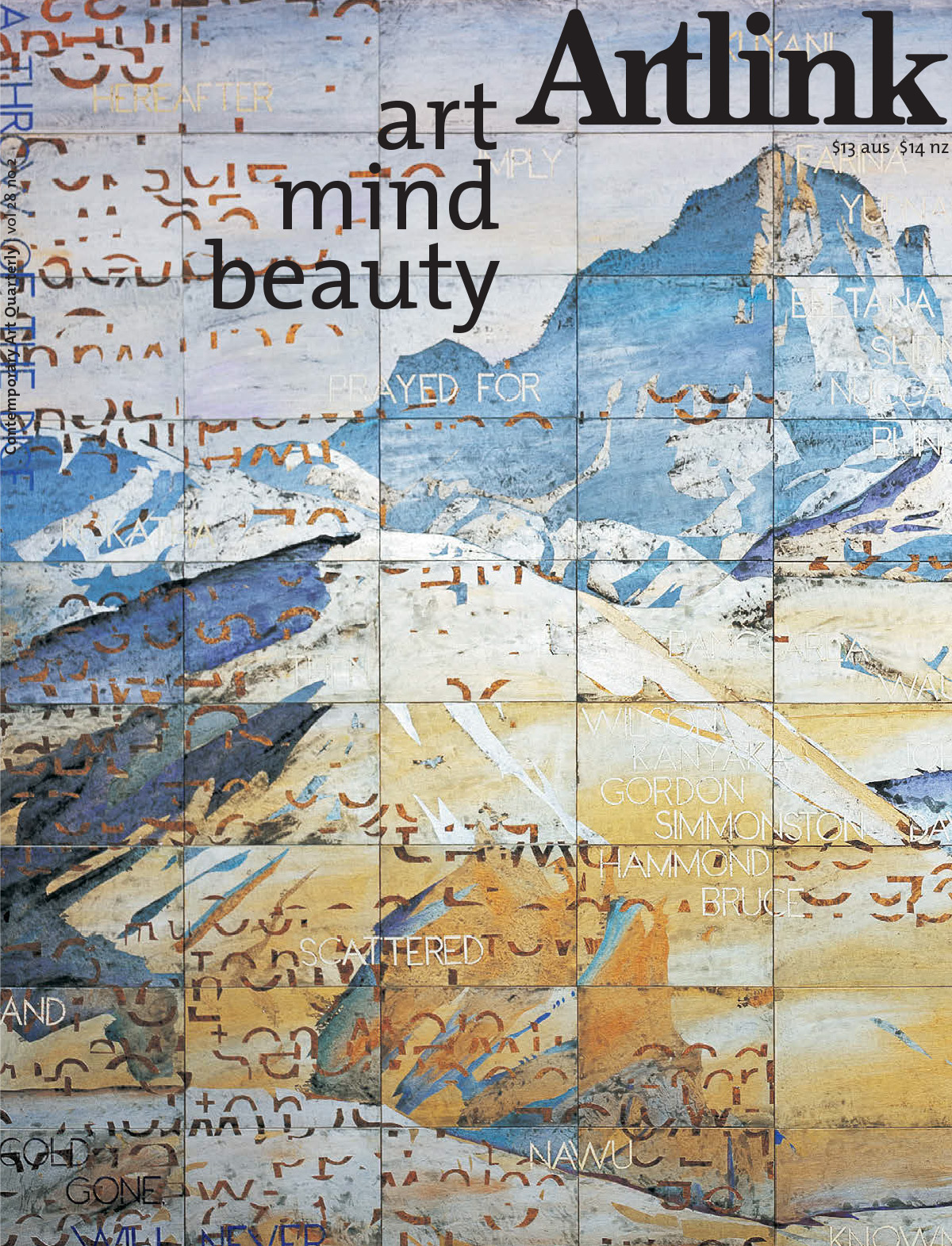
Art Mind Beauty
Issue 28:2 | June 2008
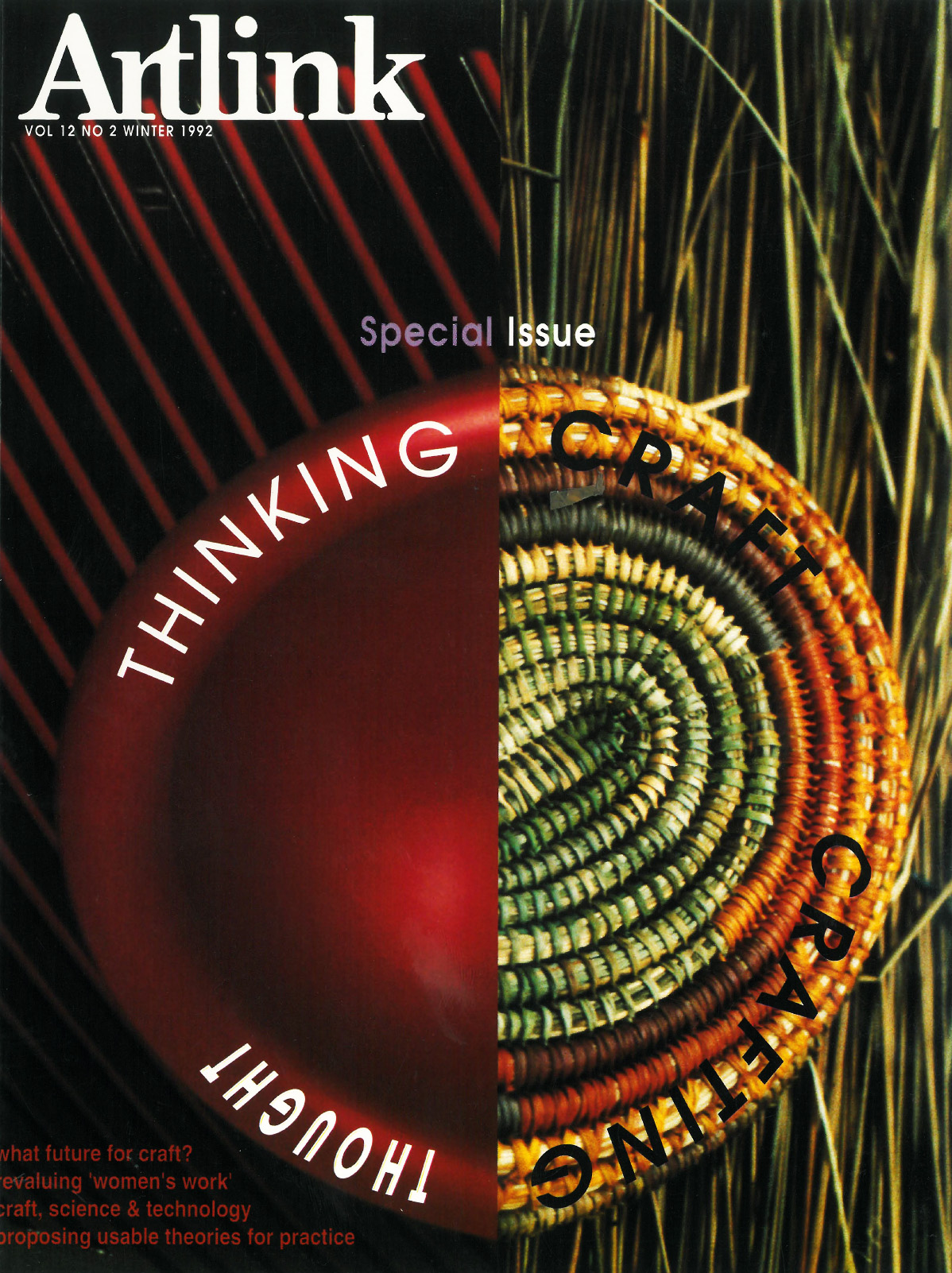
Thinking Craft, Crafting Thought
Issue 12:2 | June 1992
Articles

The romantic spirit
In 2007 Jennifer A. McMahon, senior lecturer in philosophy at the University of Adelaide, published a book called Aesthetics and material beauty: aesthetics naturalized. (See book review by Michael Newall, this issue of Artlink.) In the late 1970s McMahon was an art student looking for truth. Her move to philosophy to find truth makes use of Kant's doctrine of aesthetic ideas and argues that our perceptual and cognitive orientation to the world is reaffirmed through finding forms that seem to draw us to them for their own sake. When this occurs it unleashes ideas like immortality, infinity and freedom for which there are no perceptual counterparts. She argues that Beauty may be in the eye of the beholder but what constitutes the eye of the beholder is determined by culture.

On sunsets
A voyage across sunsets in recent Australian art from Jim Thalassoudis to Anne Zahalka, Tim Storrier to Philip Hanson. While at the outset Ted Snell quotes with approval Oscar Wilde's statement that 'nobody of any real culture ever talks nowadays about the beauty of sunsets' he goes on to show the enduring and meaningful presence of the sunset in both paintings and photography. Thus he demonstrates that art involving repossession and reinvention can, in spite of having to deal with accusations of kitsch, parochialism and provincialism, turn old themes into pure gold, both actual and emotional.

Australian Beauty
Beauty is problematic for contemporary art theory at least in part because it affords a pleasurable, life-affirming, yet ineffable experience. Yet Margot Osborne finds many examples to show that it has never really gone away. As Peter Schjeldahl observed in 1996: Beauty will be what it has always been and, despite everything, is now in furtive and inarticulate ways: an irrepressible, anarchic, healing human response without which life is a mistake.' Osborne writes: Embodiment, the synthesis of sensibility, skill and material form, is at the heart of beauty...The perception of beauty is an integrative sensual and cerebral experience, dissolving dualities of mind/body and repudiating outmoded art form hierarchies.

Shimmering fields
An essay on Indigenous aesthetics in the paintings of John Mawurndjul and Gulumbu Yunupingu from Arnhem Land, and Doreen Reid Nakamarra form the Central Desert as their work appears in the exhibition Culture Warriors, the first Indigenous Triennial, curated by Brenda Croft and reviewed in Artlink (Vol 27 #4) by Daniel Thomas. 'Their works are site-specific, alive with meaning and essentially metaphysical and religious in conception. For these artists beauty equals power, the power of the creation stories that underpin their art.'

Gatecrashing the sublime
In his youth as a regional gallery director Peter Timms imagined an exhibition called Flat Earth that would show all country artists that where they actually lived was, like anywhere else, able to be transformed into art. This article looks at the different approaches to landscape taken by the work of Tasmanian artists David Keeling, David Stephenson, Philip Wolfhagen and Richard Wastell, and how they transcend social, moral or political point-scoring to achieve their own kind of beauty, a clear-eyed, unsentimental appreciation of the environment as it really is, which frankly acknowledges the harm, both physical and conceptual, that has been inflicted upon it.

Some digressions on ornament, abstraction and the stowaway
An erudite elaboration of the concept that a certain amount of ornamentalism in art rather than being the opposite to minimalism is present within it as a secret stowaway. Wendy Walker muses on this topic with particular reference to the 2001 exhibition Ornament and Abstraction at the Fondation Beyeler, Basel, and its curator Markus Bruederlin's premise that ornamentation has played a more integral role in the development of abstract art than has previously been supposed. Walker illustrates her thesis with works by Christian Lock, Stieg Persson and Timothy Horn.

Karl Wiebke
Karl Wiebke has been making art for thirty years. Margaret Moore selectively reviews his oeuvre and concludes that though 'Beauty as an ideal is not a platform for his practice it is a consequence. His works are profoundly and atmospherically evocative of mood, weather, or nature like a bed of lichen or a sense of saturation. He has adopted a programmatic approach to his practice, setting schema and working toward attainment. That schema might incorporate an obligation of time, of mark-making, of palette or the allowance for interventions other than by his hand.

Cobi Cockburn
Cobi Cockburn is a glass artist whose work reflects her journey through the world, first in response to the country around Canberra and more recently the Shoalhaven district. It is her personal response to the landscape in which she lives (as opposed to a larger environmental message) which drives her to continue to push herself with a medium not typically used for landscape. Cockburns working methods of fusing, slumping, rolling, hot forming and cold working glass demonstrate clear connections from one piece of work to the next. Central to her motivation is the desire to create works of subtlety and grace. Cockburns working methods demonstrate clear connections from one piece to the next, yet each piece is a self-contained process in itself. A self-confessed addict of her book (her journal), Cockburn says that when she reviews her collection of journals, she can trace progress and a sense of continuous narrative. But she feels, on the whole, that her work is evolving more as a natural process as she herself develops both as an artist and a person. Each piece has its own essence, or presence, and comes together with others as collections which reflect part of the greater experience. Central to her motivation is the desire to create works of subtlety and grace, pieces that will stand for themselves but not shout at the viewer.

Robin Best
Robin Bests ceramics reflect her attention to the importance of location. Her forms are classical, meditative and reflective, and has ranged from marine forms to works decorated by Ernabella artist Nyukuna Baker. Her most recent body of work undertaken during and after a number of residencies in China reflects the complexity of the cultural, commercial and political history of China. Her snuff bottles are a picture gallery of images related to trade, culture and commerce, while others contain designs taken from each of the countries that blue and white porcelain passed through on its way from China to Europe via India and the Middle East.

Tina Gonsalves: Unleashing emotion
Tina Gonsalves is currently honorary artist in residence at the Wellcome Department of Imaging Neuroscience and visiting artist at the MIT Media Lab in the US. Her recent work is interested in adaptive, rather than expressive approaches to mental and emotional states. Gonsalves situates emotional states as rhizomorphic and emergent. In her new works, she has given the media art world a new concept, the emotional algorithm. Feel: Chameleon (2007/2008) introduces multiple subjects, both projected images and people, into a panoramic installation. It is a complex exploration of ideas drawn from the emerging discipline of social neuroscience which is interested in the ways in which people connect with the emotional state of others.

Ellen Dissanyake: homo aestheticus
In this phone interview conducted by Margot Osborne with North American ethologist Ellen Dissanyake in her home in Seattle her case for a species-centric approach to art is explored through the ideas in her books Homo Aestheticus (1992) and Art and Intimacy (2000). She states that some form of art as an activity has existed in all societies across all times and is innate in human nature. The core of this innate activity is making special, or elaboration. From this species-centric perspective, many recent developments in art are seen by Dissanayake as unfortunate aberrations and a denial of the positive life-enhancing qualities of art.

Blubberland: the dangers of happiness, Elizabeth Farrelly
University of New South Wales Press, 2007 RRP $29.95

The Formalesque: a guide to modern art and its history, Bernard Smith
Macmillan Australia 2007, RRP $135.

Aesthetics and material beauty: aesthetics naturalized, Jennifer A. McMahon
New York and London, Routledge 2007, RRP US$135

Truth and beauty entangled
Sian Ede is Arts Director for the Uk branch of the Calouste Gulbenkian Foundation where she initiated an Arts and Science program to encourage artists to engage with new thinking and practice in science and technology. She is editor and co-author of Strange and Charmed: science and the contemporary visual arts (2000) and author of Art and Science (2005). In this article Sian discusses the entanglement of truth and beauty by referring to John Keats famous 1820 poem Ode on a Grecian Urn and its statement that Beauty is truth, truth beauty, - that is all Ye know on earth and all ye need to know. and shows how relevant it is today in the fields of both art and science.

The realities of power
This is the third chapter of an unpublished autobiography by art theorist and national treasure Donald Brook. Previous chapters were published in 2005 in Artlink Vol 25#3 and in 2006 in Vol 26#4. In The Realities of Power Brook recapitulates what happened in terms of teaching and policy at the Power Institute, University of Sydney, in the late sixties when he first arrived in Australia from the UK. His long and detailed account explores why, in his opinion, the early Power Institute had so little impact on Australian visual culture. The rest of Brooks autobiography waits in the wings.

The 32nd congress of the international committee of the history of art (CIHA)
A brief description on the 32nd CIHA and its relevance in relation to art history and practices.

Insights and a conversation
A brief but notable account of the 2008 CIHA from the perspective of Anne Kirker describing the key speakers and their topical lectures in relation to art history. Kirker further elaborates on her experiences at the CIHA and what she deemed intellectually stimulating and intriguing. Kirker also summarises the general relevance and opportunities the CIHA provides.

One night only project
Curators: Kate Kelly and Pip Stafford Artists: Lindsay Arnold, Braddock, Lisa Campbell-Smith, Lachlan Conn, Moira Corby, Scot Cotterell, Lindsay Cox, Empire, Ghostpatrol, Andrew Harper, Jamin, Kate Kelly, Kirsty Madden, Noble, Michael Prior, Pip Stafford, Andy Vagg. Sound Artists: Chrysalis, Cycle, Global Ethnic, Matt Neidra. 29 March 2008

Chaos and revelry: Neo-Baroque and camp aesthetics
Curator: Edwina Bartlem 18 January 10 February 2008 Counihan Gallery, Brunswick

Papunya Painting: out of the desert
Curator: Vivien Johnson National Museum of Australia 28 November 2007 3 February 2008

The Ship of fools: recent paintings, Bill Brown
Wilson Street Gallery, Newtown 29 March - 20 April 2008

Now that I am a man I can go to war: Angela Lynkushka
Monash Gallery of Art 29 February - 27 April 2008

In response to conversations with a therapist as a narrative device: Martin Smith
Ryan Renshaw Gallery April 22 - May 10, 2008

Liminal
Curator: Colin Langridge Thomas Bachler, Andrew Dewhurst, Richard Giblett, David Martin, Todd McMillan, Ali Sanderson, Richard Wastell Carnegie Gallery, Hobart March 6 April 13 2008
Parables of Criticism
Looks at the current issues in the art versus craft debate and the impact of post modern theories.
Thinking Craft, Crafting Thought
Toward a Typology of Small Objects
With increasing anxiety, we face searching questions of the viability, the integrity, the destiny of craft. In themselves, the questions are salutory and point to an intellectual vitality in craft culture, a vigour and toughness which have not existed since the Arts and Crafts Movement. Responses to the challenge vary from relish in the contradictions of craft practice to the old-fashioned despair for any debate whatsoever.
Thinking Craft, Crafting Thought
The Floating Web
For centuries now, textiles and the skills required in their creation - spinning, weaving, embroidery, sewing, quilting - have been considered women's work, occupying them indoors while men engaged in more serious activities like warfare.
Thinking Craft, Crafting Thought
Why Craftwork Does Not Compute
Will the computers, mobile or immobile, take over craft work in the near or medium future? Are craftspeople doomed to the fate of the Indian hand loom weavers of the last century-- will their bones bleach the plains? The answer is........
Thinking Craft, Crafting Thought
Craft, Science and the Natural: An Introduction
There seems to be a consensus that craft is in a state of crisis. But consensus or not, the observation of this alleged crisis is sterile if we do not place it against its background. Is this crisis unique to craft, or is it a manifestation of a more general crisis which extends across other cognate areas? If it is more general, does it nevertheless have special implications for craft?
Thinking Craft, Crafting Thought
The Watch, the Pen and the Biro
To demonstrate the extent to which our relationship to the objects we possess has changed, Kevin Murray recently gave a short impromptu performance during a recent lecture, systematically removing a number of possessions and apparel from his person.
Thinking Craft, Crafting Thought
The Archaeological Metaphor: A Personal Excavation
Now as a much older woman with another career as an artist I have been reconsidering my experience in Museums, reconsidering the structures of archaeology which grid and measure the chaotic site.
Thinking Craft, Crafting Thought
Distant Lives/ Shared Voices
Written with Janis Jefferies. Discusses the 1992 artist initiated and organised international forum for tapestry weavers in Lodz Poland.
Thinking Craft, Crafting Thought
The Reflections of a Taxidermist
I view my memories as a fragmented collage of life, constantly in review and abstracted through the shifting of time and place. Taking and putting together some of these fragments I recall how I became a taxidermist.
Thinking Craft, Crafting Thought
After the Art/Craft debate: Critical Writing into the 1990s
Most writers and researchers in the visual arts and crafts would now consider the debate about the difference between art and craft to be an old chestnut whose day has well and truly gone. Refers to the debates between David Bromfield and Anne Brennan.
Thinking Craft, Crafting Thought
Touching Things Lightly: The Furniture of Kevin Perkins
Kevin Perkins and the Parish Church of St Thomas Acquinas, Charnwood ACT. A model for collaborative design. Consummate technical skills, the continuance of long-established traditions which focus on excellence and a fundamental reverence for the qualities of the materials are discussion points that are, at times, given minimal attention when the products of today's craftspeople and designer/makers are discussed.
Thinking Craft, Crafting Thought
Design Visions: International Exchange: Time for a Stocktake
Design Visions; The second Australian International Crafts Triennial on show at the Art Gallery of Western Australia in August September 1992 provided a chance for local viewers, historians, critics, artists, designers and 'craftspeople' to discuss and possibly take stock of our place in the international arena.
Thinking Craft, Crafting Thought
Jill Smith: Artist/ Designer in Industry
Looks at the ceramic practice of Jill Smith. It often happens when people with different views and areas of expertise are brought together to solve a problem that something new emerges.
Thinking Craft, Crafting Thought
NSW Tafe: A Different Approach to Ceramics
It turned out that 95% of the symposiasts were blissfully unaware that, starting with the TAFEs, they are already in the era of funding allocation on the basis of conceptually incoherent doctrines of an 'arts industry' with about as much relevance to their interests as atonal music has to the board of BHP.
Thinking Craft, Crafting Thought
The Crafts Come of Age
Book review The Crafts Movement in Australia: a history University of NSW Press $79.95
Thinking Craft, Crafting Thought
The Problem of Orthodoxy in Contemporary Glass
In her introductory notes to the exhibition 'Glass: Material in the service of meaning' the artist Ginny Ruffner comments on the current field of glass art as "being awash in objects, some beautiful, some ugly, most about glass itself - material as content."
Thinking Craft, Crafting Thought
Making a Living: The Jam Factory
In May 1992, Stephanie Radok spoke to Frank McBride, Peter Tysoe, Stephen Bowers, David Adderton and Greg Healey about recent developments at the Jam Factory Craft and Design Centre in Adelaide, South Australia.
Thinking Craft, Crafting Thought
Two Countries, One Weave?
Written with Phillip (Piri) Everett Over the last year Tandanya (National Aboriginal Cutural Institute) has received much bad publicity but is carrying on and slowly and steadily making history. It opened in 1989 with celebrations featuring Ernabella Inma and Yothu Yindi. Includes photographs of indigenous women at weaving workshops in the South East of South Australia at Camp Coorong Cultural Centre.
Thinking Craft, Crafting Thought
Marketing from the Top End
Representatives from seven screenprint workshops in remote and indigenous Australia came together in March 1992 to attend a textile marketing forum in Darwin organised by Steve Anderson, co-ordinator of ANCAA (Association of Northern and Central Australian Aboriginal Artists).
Thinking Craft, Crafting Thought
From Italowie to Chambers Gorge - A New Tapestry
When travelling by car over long distances the landscape outside the window endlessly unfolds as a field of subtly carying colour and texture punctuated by the irregular rhythm of straggling trees and bushes.
Thinking Craft, Crafting Thought
Futurology...Crafts...
Margaret Kirkwood, craft practitioner from NSW and active in the Craft Council within her State, writes her prediction for the future of crafts in Australia.
Thinking Craft, Crafting Thought
Futurology...Crafts...
David Walker, craft practitioner from Western Australia and active in the Craft Council within his State, writes his prediction for the future of crafts in Australia.
Thinking Craft, Crafting Thought
Futurology...Crafts...
Marion Marshall,craft practitioner from Victoria, and active in the Craft Council within her State, writes her prediction for the future of crafts in Australia.
Thinking Craft, Crafting Thought
4 Jewellery Co-operatives: On Staying in the Black: Fluxus
Looks at the workshop Fluxus in Dunedin in New Zealand, formed by Kobi Bosshard and Stephen Mulqueen in 1983.
Thinking Craft, Crafting Thought
Futurology...Crafts...
Helmut Lueckenhausen, craft practitioner from NSW and active in the Craft Council within his State, writes his prediction for the future of crafts in Australia.
Thinking Craft, Crafting Thought
4 Jewellery Co-operatives: On Staying in the Black: Fingers
Looks at the Jewellery Co-operative Fingers formed in 1976 in Auckland New Zealand. Fingers sells the work of 30 New Zealand jewellers with a managment partnership of 6 to 8 practising jewellers. The rest sell on consignment basis.
Thinking Craft, Crafting Thought
4 Jewellery Co-operatives: Ipso Factory Company
Ipso Facto Company formed in 1984 by 5 ex-students from the Sydney College of the Arts.
Thinking Craft, Crafting Thought
4 Jewellery Co-operatives: Gray Street Workshop
Looks at the workshop Gray Street, Adelaide, South Australia.
Thinking Craft, Crafting Thought
The Western Way - Linney's, Argenta and Others
Western Australia has a tradition of artist/craftspeople with studio - gallery -shops.
Thinking Craft, Crafting Thought
Yurundiali - Reasons for Optimism
The predominant group in Moree (outback New South Wales) are the Gomilleroi people who are considered the most cohesive moiety group in Australia. Looks at the indigenous artists co-operative Yurundiali which is marketing its screen print designs.
Thinking Craft, Crafting Thought
Screenprinting the Tiwi Way: An Element of Spontaneity
It is not accidentatl that amongst the Tiwis of Bathurst and Melville Islands, fabric printing has become such a significant craft form. Of all indigenous Australian cultures the Tiwis historically have perhaps the richest tradition of body painting.
Thinking Craft, Crafting Thought
The Hermannsburg Potters
The Arrernte people from Hermannsburg a former Lutheran mission about 130 km west of Alice Springs in Central Australia are generally known for their Namatjira style watercolour paintings. Now they are making ceramics.
Thinking Craft, Crafting Thought
Semiotically Speaking: A Craftperson's View
One need not restrict this semiotic approach to an analysis of the objects of fashion given that the major role adopted by craftspeople in contemporary times is that of drawing attention to otherwise ordinary objects and processes by remaking them in a mode other than mass production.
Thinking Craft, Crafting Thought
Tim Burns - Paintings and Drawings
Exhibition review Cape Bruny Winter 1990 - 1991
Paintings and Drawings by Tim Burns
Dick Bett Gallery Hobart Tasmania
7 - 26 May 1992
Thinking Craft, Crafting Thought
Tasdance in Silk
Exhibition review Greg Leong
Launceston Country Club Tasmania
Thinking Craft, Crafting Thought
Anne Newmarch - Superimpositions
Exhibition review Superimposition
Ann Newmarch
Prospect Gallery Adelaide South Australia
23 February - 22 March 1992
Thinking Craft, Crafting Thought
...But Never by Chance..., Skin and From Women
Exhibition review ...but never by chance
(eroticism) editor/curator Linda Marie Walker Exhibitors Jennifer Hamilton, Melanie Howard, Bronia Iwanczak, Sheridan Kennedy, Rosemary Laing, Rosslund Piggott, Carol Rudyard
Skin
Curators Annette Bezor, Julianne Pierce, Exhibitors Maria Kozic, Jan Nelson, Sally Smart, Josie Starrs
Contemporary Art Centre Adelaide South Australia
May 1 - 31 1992
From Women
Curator Vivonne Thwaites
Exhibitors Maria Cruz, Michele Elliot, Nicole Page-Smith, Lucia Tancredi
Artspace Adelaide Festival Centre
10 April - 23 May 1992
Thinking Craft, Crafting Thought
Hossein Valamanesh Recent Work
Exhibition review Hossein Valamanesh: Recent Work
Greenaway Gallery Adelaide South Australia
3 May - 3 June 1992
Thinking Craft, Crafting Thought
Contemporary Gipsland Artists
Exhibition review Contemporary Gippsland Artists
A touring exhibition initiated by the LaTrobe Valley Arts Centre
Morwell Victoria
University of South Australia Art Museum
9 April - 8 May 1992
Thinking Craft, Crafting Thought


